
Imagine a perfect prehistoric time capsule laying undisturbed for millennia. This is La Cueva de Ardales, an enormous cave near the small town of Ardales, 50 kilometres from the Mediterranean coast. The cave would likely never have been discovered had it not been for an earthquake that shook the region in 1821. The tremor opened a small crack into an underground world that had not seen light or been visited for at least 3,000 years.
A cave tour in the 1800s
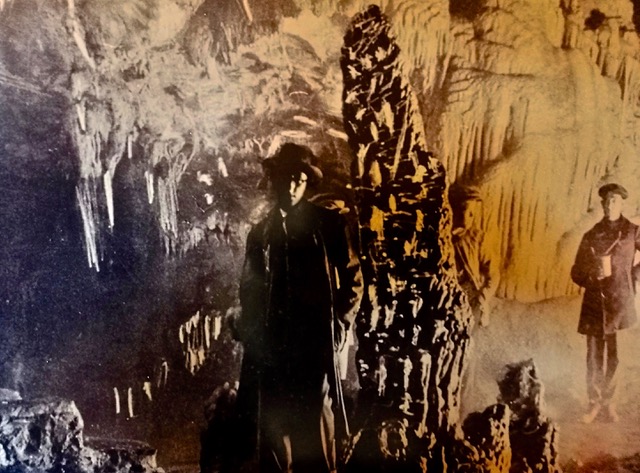
Only two years after its discovery, in 1823, the cave became the first in Spain to open to the public. For a mere 2 reales people could visit the new national tourist attraction, said to contain fossilized human remains. Doña Trinidad Grund, a woman much before her time, bought the cave area in 1860, adding the current railings and stone steps to improve access – and on occasion using her acquisition as a staging ground for flamenco shows for the high society of Malaga and Sevilla.
The first scientist to study the rock art in the cave was the famous French archaeologist, geologist and priest Henri Breuil, who visited the cave with the Spanish geologist and engineer Miguel Such in 1918. Breuil’s findings were published in the prestigious Parisian scientific journal L’Antropologie in 1921. It was clear that the ancient rock paintings were significant, but research methods then weren’t able to specify dates beyond ‘prehistoric’.
A subterranean walk of otherworldly beauty
If you have never been into a natural subterranean grotto, it is an otherworldly, or actually under-worldly experience.

Caves keep a steady year-around temperature, in the case of Ardales of 17 degrees Centigrade with 90 to 100% humidity. It is a practically enclosed atmosphere that undergoes microscopic changes in the space of millennia. This makes cave interiors completely different from anything you will see on the earths’ surface.

Visiting La Curva de Ardales is worthwhile for its natural beauty alone. From the information centre, visitors drive on a meandering road into a hilly region, where the coastal planes and the interior mountains meet. A pyramid-structure protects the entrance, only allowing 15 visitors per day, as preservation is essential. Our guide tells us to leave bags, cameras and cell phones in the cars, so nothing will ‘accidentally’ be photographed or inadvertently end up in someone’s backpack. Once inside, he distributes flashlights and locks the door securely behind us. Then, minding each slippery step, we begin the two-hour underground adventure.
The 1577-meters long cavity takes us through narrow passages and enormous underground galleries, past upside-down columns, hidden lakes and million-year-old stalactite formations. Each section is known for its visual counterpart above ground, like the Waterfall, the Church Organ or the Hall of the Stars, while the naming also helps map out an otherwise hard to navigate subterranean landscape.
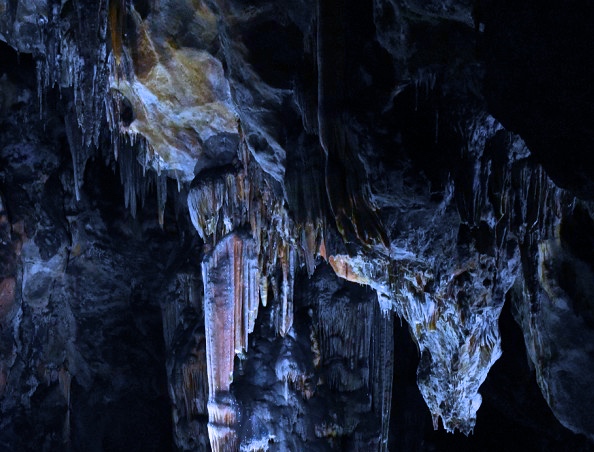
Some sections shimmer as if encrusted with microscopic diamonds, though actually it is our flashlights catching particles of calcium. Other places, iron and copper deposits have coloured the cave wall yellow or red, which become brighter when wet. The entire cave interior is like a surrealist film set, where stone appears to have melted on to itself and every wall is a genuine piece of art. Anyone who has been to Gaudi’s Sacrada Familia will clearly see from where he got his inspiration!

Dating the cave - From Carbon 14 to Uranium-Thorium and 3D scans
Though it became a National Monument in 1931 and was used as an air shelter during the Spanish Civil War, the cave was semi-abandoned for much of the 1900s. It would be almost a century after Breuil’s initial exploration before a team of international scientists were able to accurately date the oldest rock paintings.
Many have heard of Carbon-14, a scientific method of dating organic material by measuring content of the radioactive isotope of carbon. Discovered by Willard Libby in 1946, it provided the first objective age-estimation of up to 30,000 year-old prehistoric findings. It was the state of the art in its day, but as a dating method today, it is rather outmoded.
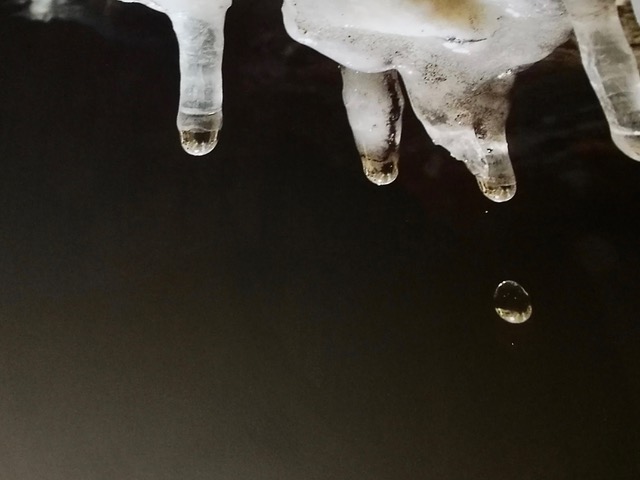
The latest method, known by scientists as U/Th dating, uses a precise uranium-thorium technique, which overcome some of the limitations of carbon testing. “U/Th method dates geological processes without having to touch the colouring material of the cave art”, explains Pedro Cantalejo Duarte, the director of the archaeological complex. The process avoids contamination during collection and handling while enabling definite dates without age restrictions. With new computer technology, researchers can also discover if a piece of flint was worked with a stone, bone or other material, to better understand the prehistoric human way of life.
Terrestrial laser scanning is another recent technique in geoarchaeological exploration. This has been used in Ardales to create a topographical 3D model of the cave and surroundings. The scans can help establish cave dimensions, ceiling thicknesses, entrances, as well as creating lighting simulations to determine areas reached by natural light.
50,000 years of cave art

The Ardales cave is a perfectly preserved time capsule of not one, but several prehistoric époques. Tens of thousands of years ago beings like us left messages on the walls for reasons that are still unknown, but with the help of science, a new door of knowledge is opening.
A multidisciplinary international research team has been investigating the cave since the 1990s, led by the Universities of Cádiz and Köln. To date, more than 1000 motives of rock art made over 50,000 years have been discovered, which granted the Ardales cave a Patrimony of Humankind in 1998. “This is one of the most interesting places on the Iberian Peninsula, and perhaps one of the areas least known to the general public,” says Pedro Cantalejo Duarte.
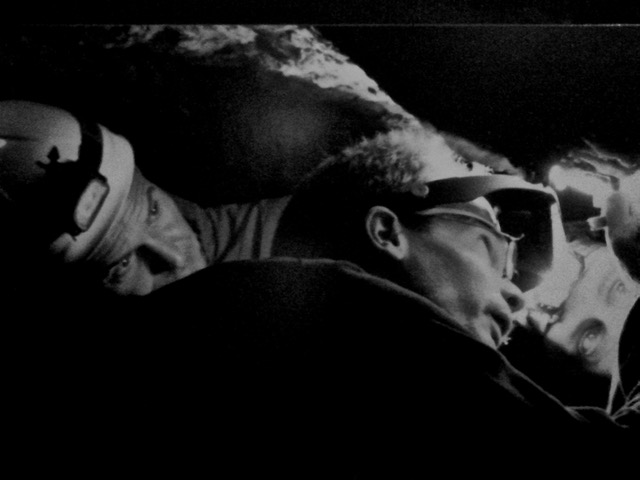
The first hominids arrived on the Iberian Peninsula about 1.2 million years ago in the Palaeolithic period. Mostly nomadic, their lives consisted of hunting, gathering and struggling to survive. They carved stone and bone into tools and weapons and used fire for heat and protection. Skeletal studies indicate that their society was more egalitarian with food distributed evenly amongst a group. Palaeolithic art is figurative and life-like. In the Ardales cave it includes paintings of goats, bulls, snakes, birds and human female figures.
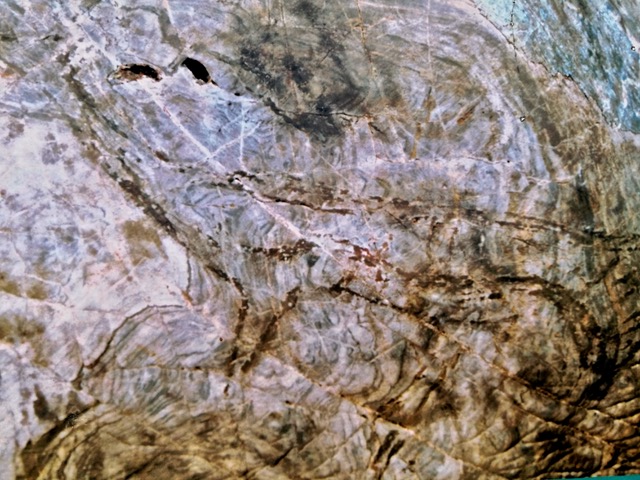
The introduction of agriculture about 10,000 years ago started the Neolithic era. Farming led to a more settled life, new tools and pottery, while also introducing the concept of private property. Cave art from this era is more abstract, using lines, dots and symbols.
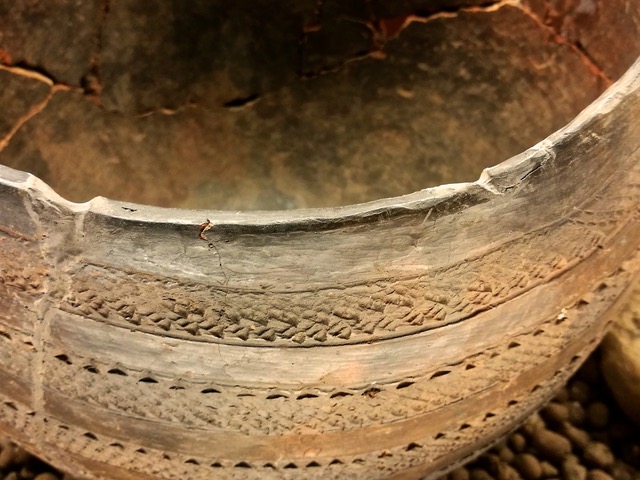
The Ardales cave was also used as a necropolis. Funeral deposits with 5,000 year-old human remains were discovered near the original cave opening. Recent excavations have revealed findings from 60-70,000, 45,000, 20,000 and up to 12,000 years ago, in layers less than a foot apart. Discoveries of micro-fauna has made it possible to study Palaeolithic diet and health, indicating that they ate mostly dear, mountain goats and wild cattle. The studies confirmed that life would have been tough. Children had to work and hunt from an early age and few adults lived past 40.

The cave also contains nine rare negative hand imprints, only found in 32 caves worldwide. The imprints were produced about 30,000 years ago by putting a hand on the rock. Using straws as a primitive paint dispenser, they would spray natural pigments onto the wall, leaving a negative imprint where the hand had been. The different fingers positions have led scientists to believe that it was some sort of hand signal.
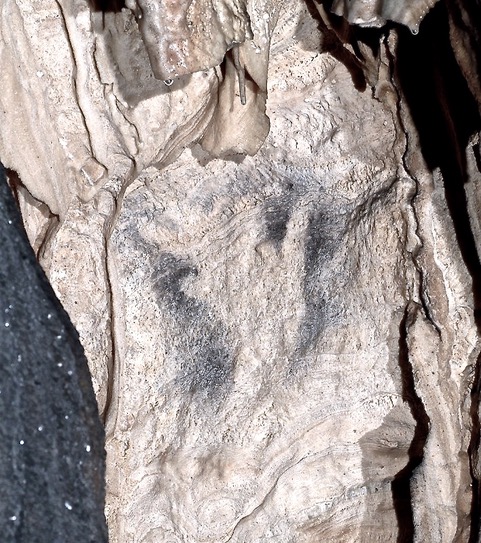
How Neanderthal are we?
The Neanderthal “cavemen” never had their permanent homes inside caves. International scientists have found no proof of on-going prehistoric habitation in caves, which have limited supply of light, oxygen and food. Caves can extend for kilometres into a mountain, making for a very dark home. In addition, most nutrients cannot be found in caves and fires can only be lit where smoke can escape. Prehistoric populations therefore are believed to have lived near caves, finding temporary shelter inside them.

We often think of Neanderthals as hairy, squat-brained creatures of low intelligence. In fact, we might be embarrassed to discover that ancestry swab-tests reveal that we are a tiny percentage Neanderthal! All non-African populations apparently have between 1.5 to 2.1 % Neanderthal genetic material, while as much as 20% of Neanderthal DNA may have survived in modern human skin, hair and diseases. Our Neanderthal ancestors were physically stronger than us, but similar in size and weight. If they survived their first 20 years, they might live almost half a century. They died out about 40,000 years ago, having shared the sparsely populated planet with the subspecies Homo Sapiens Sapiens, who lived at the end of the Neanderthal era.

If you happen to carry Neanderthal genes, do not despair. New discoveries from Ardales have brought exciting knowledge about our long gone ancestors, which almost will make you proud to be one…
Neanderthal fingerprints
The most remarkable cave art in La Cueva de Ardales go back at least 65,500 years. Using U/Th dating, scientists have now proven that the markings are 20,000 years older than when formerly believed that prehistoric art began, and, more significantly, 20,000 years older than our species. They have therefore concluded that the first pre-human inhabitants to the Iberian Peninsula, the Neanderthals, produced Europe’s most ancient art. Before this discovery, artistic expressions were exclusively attributed to Homo Sapiens, thinking Neanderthals didn’t have sufficient mental capacity for art, but the cave markings challenge this belief.
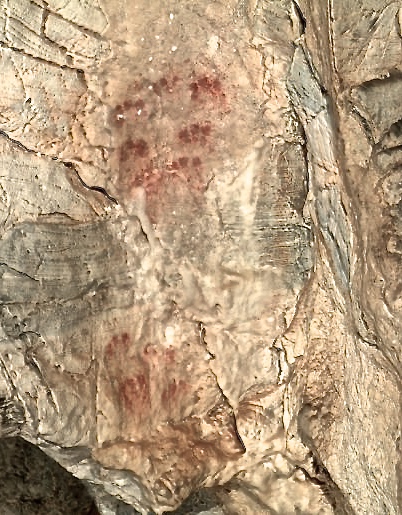
Neanderthals made red paint from iron deposits and marked almost the entire cave with finger and hand imprints (except areas now only accessible by metal ladders). Leaving signs for future visitors, they planned where to put these to avoid calcium deposits covering them. From the size and placement, scientists have determined that children, likely held in the arms of their Neanderthal parents, made some of the markings. What? Thinkers, teachers, caring parents, strategizers and communicators, this is not how most of us have regarded our pre-human ancestors…
Total darkness and Neolithic lanterns
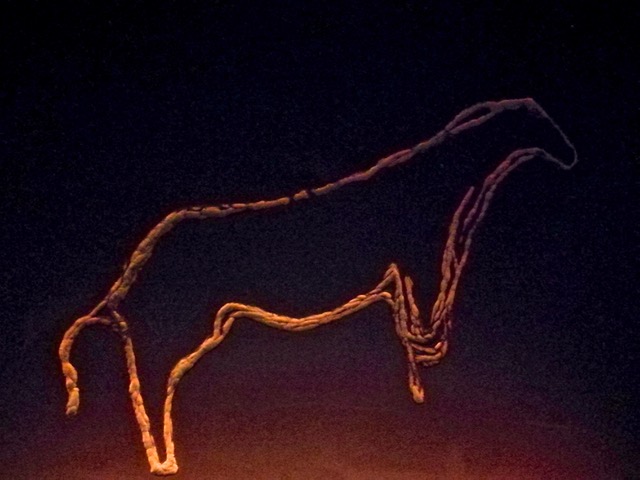
Modern humans are rarely in the dark. Contemporary society doesn’t allow us to be in total darkness, nor in complete silence. When our trusted guide Gerardo asked us to turn off our flashlights, some found it uncomfortable. With absolutely no light, we become acutely aware of our other senses - the smell of wetness and stone, an occasional drop falling, the silent echo of a cavernous space. After a brief moment of adjustment, a deep feeling of peace and reverence descended upon me. I could almost imagine how prehistoric visitors must have felt and why they ventured on a dark and risky journey into the centre of the earth to leave their fingerprint in this very cave.
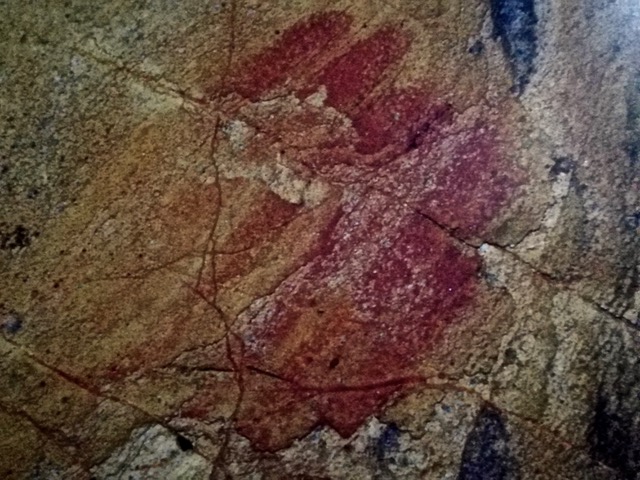
Taking about darkness, fire has been known to humans for more than a million years. Our ancestors might have carried flaming torches when clambering around bare footed in the slippery cave, but at one point they invented the prehistoric floor lantern. Carving hollows into broken stalagmites, the first Neolithic wax candle was created from bone marrow and bees’ wax, using juniper root as wicks.
The last unwritten chapter

The Council of Europe Cultural Routes included La Cuava de Ardales under Prehistoric Rock Art Trails in 2010, making it part of a new concept of scientific tourism. But the cave still has unexplored parts and chambers to be excavated.
What other stories does the cave have to tell? Is it a key to pre-human existence and an answer to where we came from? The prehistoric art was made for us to see. Scientists explain cave paintings as our traffic signs - a system of structured graphic symbols clearly understood by those who lived at the time. Yet for all our scientific progress, we still do not know exactly what they are telling us. Some paintings are found a thousand meters into caves in places that are virtually inaccessible even now. Why did they do it? It had to have been more than an artistic urge to paint a horse. Were they topographic marks, calendars, pledges, celebrations or part of religious rituals? We do not know for sure. What we do know is that they were extremely important.
The research at the Ardales cave continues, but some mysteries might be left to crack by a future generation of hominids.

General notes:
As picture taking is not permitted in the cave, some of the photographs used in this article are taken from the Ardales visitation centre or from display panels outside the cave.
Guided tours must be pre-booked, and are generally in Spanish. For more information, please go to La Cueva de Ardales
Resources:
- Academía: Cueva de Ardales, (Málaga, España) Patrimonio Prehistórico en el Sur de la Península Ibérica.
- Caminito del Rey and its surroundings - Nomination Proposal for inclusion on the World Heritage list
- Unesco.org
- Cueva de Ardales o Doña Trindad - Ayuntamiento de Ardales
- Diputacíon de Málaga
- Junta de Andalucía
- Malaga en el Corazon - La increíble historia de la vida de doña trinidad grund
- Axarquiaplus - El hallazgo de pinturas en cueva de Ardales habitada por neandertales revoluciona la historia del Arte
- Henri Breuil La grotte d'Ardales, L'Anthropologie, Paris 1921
- Editorial La Serranía – Interview with Pedro Cantalejo Duarte
